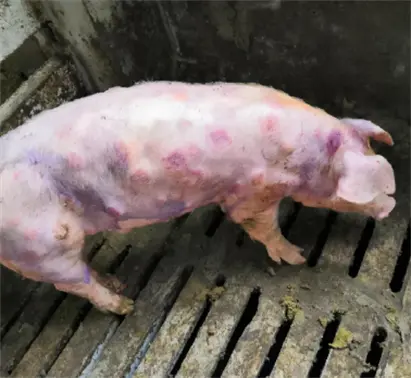Special topics on swine diseases: Streptococcosis in Pigs
Overview
Swine streptococcosis is a zoonotic disease caused by various pathogenic Streptococcus species in pigs. It leads to conditions such as meningitis, septicemia, endocarditis, arthritis, and pneumonia, primarily manifesting as fever and severe toxemia. In rare cases, it causes streptococcal toxic shock syndrome, with high mortality if not diagnosed and treated promptly.
Pathogen
Streptococcus in pigs is a Gram-positive, chain-forming, non-motile cocci without spores but encapsulated. It is a facultative anaerobe.
Epidemiology
Streptococci are widely distributed in nature, with pigs being highly susceptible. Humans and other animals can also be infected. The disease occurs year-round, peaking in autumn, and affects pigs of all ages. However, newborn and suckling piglets show higher morbidity and mortality, often presenting septicemic or meningitic forms. In breeding pigs and pregnant sows, cases often manifest as suppurative lymphadenitis.
Infected pigs, including subclinical carriers, shed the bacteria and transmit it through oral, nasal, or skin wounds. It spreads within pig populations locally and gradually.


Pathology
- Acute septicemia: Organs show congestion, hemorrhage, pericardial effusion, splenomegaly, and fibrinous inflammation in serous membranes.
- Meningitis: Congestion, hemorrhage of meninges, increased cerebrospinal fluid with pus, and purulent encephalitis.
- Arthritis: Joint swelling with turbid synovial fluid, cartilage necrosis, and suppurative foci in surrounding tissues.
- Lymphadenitis: Swollen, firm lymph nodes with abscesses and purulent discharge.
Clinical Symptoms
Incubation lasts 1–3 days, occasionally longer. Symptoms are classified into four types:
- Acute septicemia: High fever (41.5–42°C), lethargy, reduced appetite, red conjunctiva, nasal discharge, and rapid, shallow breathing. Some cases exhibit red or purplish spots on ears, limbs, and abdomen, progressing to death within 1–4 days.
- Meningitic type: High fever, incoordination, circling, teeth grinding, paddling, and coma.
- Arthritic type: Joint swelling, pain, lameness, and inability to stand. The disease lasts 2–3 weeks.
- Suppurative lymphadenitis: Commonly affects submandibular, pharyngeal, and cervical lymph nodes, causing swelling, pain, and abscess formation. Ruptured abscesses discharge thick green pus but rarely result in death.
Control and Treatment
-
Treatment
- Isolate affected pigs and treat based on the disease type. Drain abscesses and disinfect with 3% hydrogen peroxide or 0.1% potassium permanganate.
- For septicemia and meningitis, administer antibiotics or sulfonamides early:
- Penicillin (400,000–1,000,000 IU per dose) IM 2–4 times daily.
- Gentamicin (1–2 mg/kg) IM twice daily.
- Acetylspiramycin (2.5–10 mg/kg) IM every 12 hours for three days.
- Other effective antibiotics include cefotaxime, cefazolin, amoxicillin, florfenicol, or TMP+sulfa drugs.
-
Prevention
- Strengthen herd management and reduce stress. Control concurrent diseases such as PRRS and circovirus. Isolate infected pigs and disinfect thoroughly with 1% Roxycide.
- Vaccination:
- Administer aluminum hydroxide-based bacterins (5 mL) to pigs over 60 days old and repeat annually.
- Live attenuated vaccines: Inject 1 mL subcutaneously or orally (4 mL), providing six months of immunity.
- Prophylactic antibiotics can be used, such as tetracyclines or other listed drugs, for 4–6 weeks.





